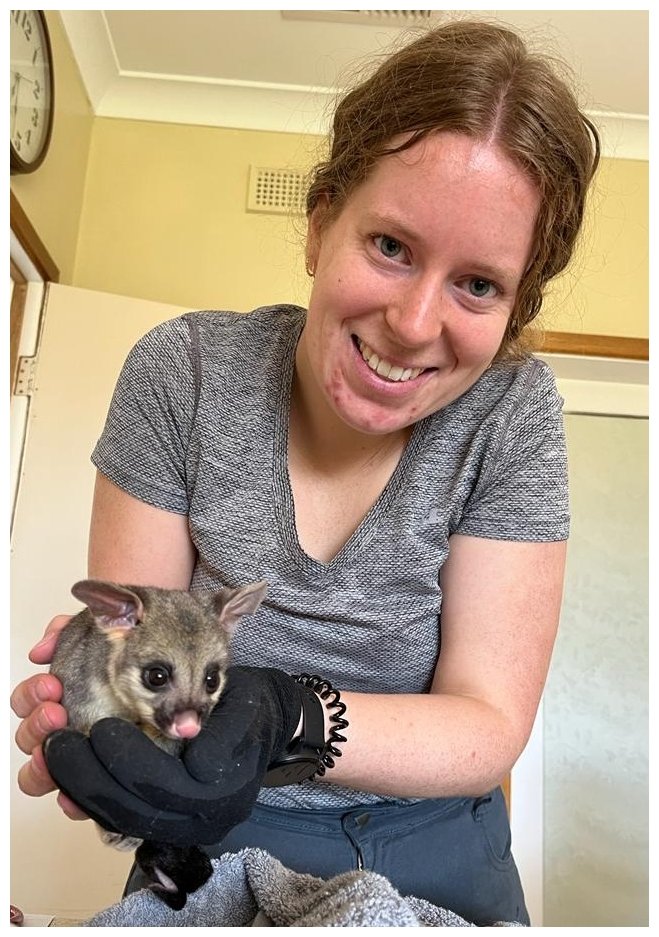by Shane Sody. Research and all images by Tara McKenzie
Hundreds of possums are scattered about your Adelaide Park Lands, but they’re spread out very unevenly.
Some parts of your Park Lands have few, or no possums, but in one spot, they’re overcrowded.
Adelaide University researcher, Tara McKenzie is hoping to get some protection for the possum population in Whitmore Square/ Ipparityi, which has no other possum habitat nearby.
Her research on possums in your Park Lands suggests the large population of possums in Whitmore Square might be at risk from disease, competition for resources, and from traffic, should the possums try to disperse.
Tara McKenzie’s report suggests that the City Council should consider warning signs around Whitmore Square / Iparrityi
As part of her PhD research, Tara McKenzie undertook an internship with the Adelaide Park Lands Association, which included a spotlighting survey of “arboreal mammals” in your Park Lands over summer 2023-24. The main focus was on the common brushtail possum (Trichosurus vulpecula) and the common ringtail possum (Pseudocheirus peregrinus).
The green lines are “transects”; the lines subject to Tara McKenzie’s spotlight surveys over summer 2023-24.
Some Parks were off-limits due to events being held (e.g. Fringe venues in Parks 13 and 14) or construction work.
Not all Parks were surveyed, and in many parts of your Park Lands, there was little or no habitat for possums, but where there is suitable habitat, the possums are very unevenly spread.
Blue Gum Park /Kurangga (Park 20) is an example of a Park which has large areas (sporting fields) not suitable as possum habitat.
How many possums?
Tara McKenzie’s final report provides baseline evidence of possum population in your Adelaide Park Lands, and density in specific Parks. In all there were 226 brushtail possums and 143 ringtail possums observed; a total of 369.
The greatest number were found in Lefevre Park /Nantu Wama (Park 6), with 82 seen on a single night.
Park 6 is a relatively large Park, (42 hectares) so despite the large numbers the population density in Park 6; was less than half the possum population density of the tiny (2-hectare) Whitmore Square.
Tara McKenzie’s final report contains these key findings and recommendations:
Risks to possums in the Adelaide Park Lands:
Habitat overlap of both possum species – possible risk of disease spillover.
High population density – increases rate of disease spread and competition for resources.
Loss of food or shelter resources, especially large hollow bearing trees.
Vehicle collisions and predation from foxes and cats.




Recommendations:
Monitor health and disease status of individuals in high-risk populations.
Discourage the public from interacting with possums (e.g. feeding or touching) - risk of zoonotic diseases or injury from bites and scratches.
Increase signage on surrounding roads to make drivers aware of possums in the area and signage in the Park Lands to encourage people to observe possums from a distance and to discourage them from feeding or touching possums.
Read Tara’s final report here: (PDF, 11pp, 1.3Mb)
Tara McKenzie is a University of Adelaide researcher, studying possums both in the Riverland, and in your Adelaide Park Lands.
Her research included an internship with the Adelaide Park Lands Association where her main role was to collect information about the plant and animal species that are found across your Park Lands, with a focus on those that have an important role in possum habitats.











